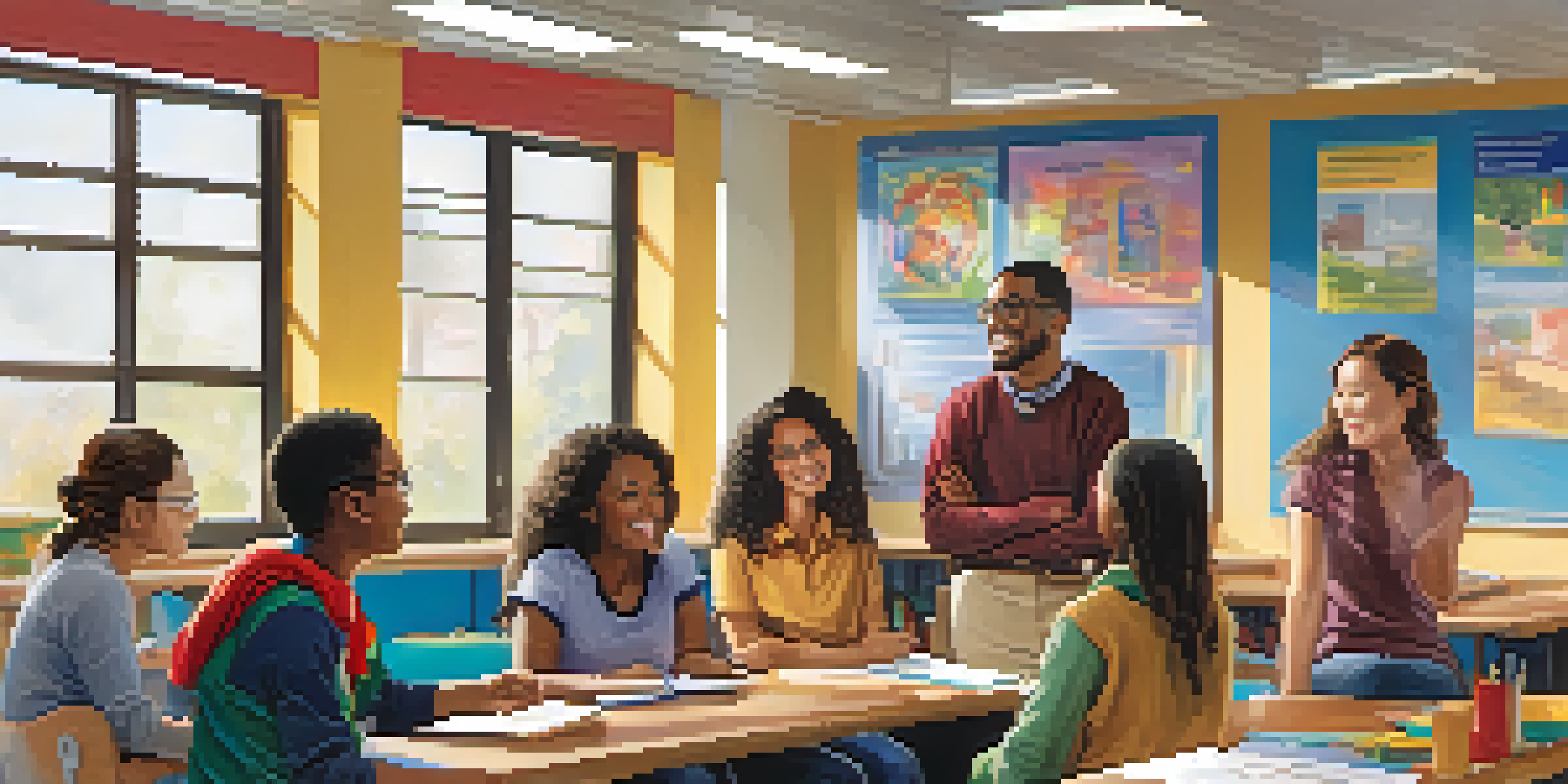The Importance of Self-Reflection in Culturally Responsive Teaching

Understanding Culturally Responsive Teaching
Culturally responsive teaching (CRT) is an approach that recognizes the importance of including students' cultural references in all aspects of learning. This method values students' backgrounds as a significant part of their educational experience. By embracing diversity, educators can create a more inclusive environment that fosters engagement and understanding among students from various cultures.
The Role of Self-Reflection in Education
Self-reflection is the process of examining one's thoughts, actions, and beliefs to gain insights and improve practice. In education, it encourages teachers to assess their teaching methods and interactions with students critically. This practice is essential for continuous growth and helps educators become more aware of their biases and assumptions, ultimately enhancing their effectiveness in the classroom.
Culturally Responsive Teaching Matters
Embracing students' cultural backgrounds enhances their educational experience and fosters inclusivity.
Connecting Self-Reflection to Culturally Responsive Teaching
When teachers engage in self-reflection, they can better understand how their cultural perspectives influence their teaching. This understanding allows educators to identify areas where they might unconsciously perpetuate stereotypes or biases. By acknowledging these influences, teachers can adjust their approaches and strategies to meet the diverse needs of their students more effectively.
Building Empathy Through Self-Reflection
Self-reflection fosters empathy, an essential component of culturally responsive teaching. By reflecting on their experiences and those of their students, teachers can cultivate a deeper understanding of the challenges faced by diverse learners. This empathetic approach encourages educators to be more mindful and responsive to their students' needs, creating a supportive learning environment.
Self-Reflection Boosts Teaching
By critically assessing their methods, educators can identify biases and improve their effectiveness in diverse classrooms.
Practical Strategies for Self-Reflection
Incorporating self-reflection into daily teaching practices can be straightforward. Educators can start by keeping a reflective journal, where they jot down their thoughts after each class. Additionally, seeking feedback from peers and students can provide valuable insights that might not be apparent during self-assessment.
Creating an Inclusive Classroom Environment
Self-reflection helps teachers create an inclusive classroom where all students feel valued. By understanding their biases, educators can implement strategies that celebrate diversity and promote equity. This inclusive environment encourages students to share their cultural perspectives, enriching the learning experience for everyone.
Empathy Enhances Learning Environments
Building empathy through self-reflection allows teachers to create supportive spaces that acknowledge and celebrate diversity.
The Impact of Self-Reflection on Student Outcomes
When teachers practice self-reflection, it leads to improved student outcomes. Students who feel understood and respected are more likely to engage actively in their learning. Moreover, when educators adapt their teaching styles based on reflective practices, it can lead to a more effective and relevant curriculum that resonates with all students.
Continuing the Journey of Self-Reflection
Self-reflection is not a one-time activity but an ongoing journey for educators. As classrooms become increasingly diverse, the need for reflective practices grows. By committing to continuous self-assessment, teachers can ensure they remain effective and culturally responsive, ultimately benefiting their students and the broader community.